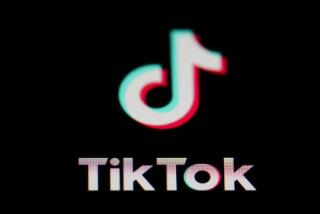
In early 2021, as TikTok was devouring Americans’ attention, Netflix launched a feature seemingly tailor-made to compete with the upstart app. Fast Laughs, as the new tool was called, appeared at the bottom of the streaming giant’s mobile platform, offering viewers a continuous feed of snappy comedy clips.
It was essentially Netflix, TikTok-ified. Want to watch “Big Mouth” gags while waiting for the bus? Fast Laughs had you covered.
And yet two years later, it’s gone without a trace. Fast Laughs was discontinued at some point, according to an undated post on the company’s help forum. Netflix declined to give further details.
Streaming platforms and short-form video apps — including TikTok, Instagram Reels, YouTube Shorts and Snapchat Spotlight — are among the biggest innovations in entertainment technology over the last couple of decades. And while they fill different niches, they compete for the same resource: attention, especially from younger viewers.
The complete guide to home viewing
Get Screen Gab for everything about the TV shows and streaming movies everyone’s talking about.
You may occasionally receive promotional content from the Los Angeles Times.
It’s no wonder, then, that streaming companies have occasionally tried to eat TikTok’s lunch — and, at least so far, have found only limited success. See the collapse of Quibi, which sought to throw Hollywood production values behind phone-friendly shorts.
What would it take for a streaming company to successfully hop on the short-form video bandwagon? Could something like Fast Laughs ever truly challenge TikTok for the throne?
Not likely, industry insiders say.

Short-form content works fine for TikTok, which makes its money from advertising. But it doesn’t drive subscriptions, which is the primary business model for Netflix and its competitors.
“I still don’t believe short-form content is the type of content that would engage you as a subscriber,” said Susanne Daniels, YouTube’s former global head of original content who now teaches about the streaming industry at UCLA. “With subscription, you want to feel like you’re getting premium content, star-driven content — and short-form is something that you feel like you can do yourself.”
It would also be tough for streaming companies to compete with social media’s seemingly endless drip of content without sacrificing quality.
The streamers themselves say they don’t feel pressure to follow TikTok’s lead, even as the industry struggles through a post-COVID downturn.
Amid a writers’ strike largely about the power of platforms, we take a snapshot of the streaming pecking order, from Netflix to (formerly HBO) Max.
An executive at one major streaming platform, who was not authorized to comment, said in an email that the high demand for full-length programming means “there’s currently no need to pivot the model to chase the short-form business.”
It seems unlikely that big-name streamers would embrace the user-generated aspect of TikTok and its ilk, which is central to social media’s appeal. Doing so would introduce headaches about content moderation and quality control.
But there could still be opportunities when it comes to other hallmarks of the TikTok revolution, including bite-sized run times, smartphone-first platforms and vertical video formatting.

Harry Gestetner, founder and co-CEO of the social media monetization platform Fanfix, said streaming services should try to innovate by, say, using a shorts program to draw young people to their main content.
“Netflix, Max, Hulu, etc., etc. — whilst they disrupted Hollywood and traditional entertainment, I think entertainment itself is very much fighting a losing battle against social media,” Gestetner said. “I kind of see it as akin to innovating the fax machine when everything’s moving toward email.”
According to TechCrunch, the average time that children ages 4-18 spent watching TikTok (91 minutes a day) and YouTube (56 minutes a day) exceeded what they spent on streaming platforms such as Disney+ (47 minutes), Netflix (45 minutes), Prime Video (40 minutes) and Hulu (38 minutes) at the end of 2021.
To be sure, streamers do use social media as a talent pipeline.

TikTok megastar Addison Rae starred in Netflix’s “He’s All That” and in 2021 announced a deal to appear in and produce subsequent films for the company. Netflix and Hulu have launched influencer-themed docuseries about, respectively, the Hype House creator collective and Charli D’Amelio’s TikTok-savvy family.
But it’s one thing to glom onto internet success stories and another to create them in-house.
“The mainstream, traditional media players look down their nose at what has traditionally been called ‘social video’ — and they do so at their own detriment,” said Evan Shapiro, who ran the short-lived NBCUniversal comedy video service Seeso. “Even when they get into it, it’s always kind of a side hustle and not a main hustle. It’s never integrated with the full operation.”
“It’s a kind of almost ‘format bigotry,’ if you will,” added Shapiro, who now runs his own firm.

Entertainment mainstays have often struggled to find an audience for mobile-friendly, short-form or otherwise TikTok-esque media.
The highest-profile of those failures was Quibi. Led by industry powerhouses Jeffrey Katzenberg and Meg Whitman, the startup raised $1.75 billion in funding before shutting down in late 2020 just months after it launched. Similar efforts, including Verizon’s Go90 and former Hulu CEO Jason Kilar’s Vessel, also floundered.
Industry leaders who look down on short-form content can point to these failures as an excuse for why it’s not worth trying to compete with TikTok and YouTube, Shapiro said.
There are exceptions, though.
Cartoon Network’s Adult Swim programming block — which has found success with viral hits including “Too Many Cooks” and the endlessly memeable “Tim and Eric” oeuvre — is one of the few industry names taking web-friendly video seriously.
As streamers reduce spending on comedy specials, comics are turning to other platforms to share their content. Four stand-ups recount their experiences.
That’s not by accident.
“All that short-form stuff that Adult Swim has done over the years … translates really, really well to a social media aesthetic and tone,” said Michael Ouweleen, president of both Adult Swim and Cartoon Network.
Ouweleen attributed Adult Swim’s social media comfort level to its small size, its hiring of internet-savvy staffers and its willingness to accept the randomness of what the web latches onto.
It would probably take a major cultural shift for bigger entertainment firms to dive headfirst into that world.
“You don’t fully control your fate on social media,” Ouweleen said. “There’s still something unknowable about it — which makes large media companies wary.”
More to Read
The biggest entertainment stories
Get our big stories about Hollywood, film, television, music, arts, culture and more right in your inbox as soon as they publish.
You may occasionally receive promotional content from the Los Angeles Times.














